

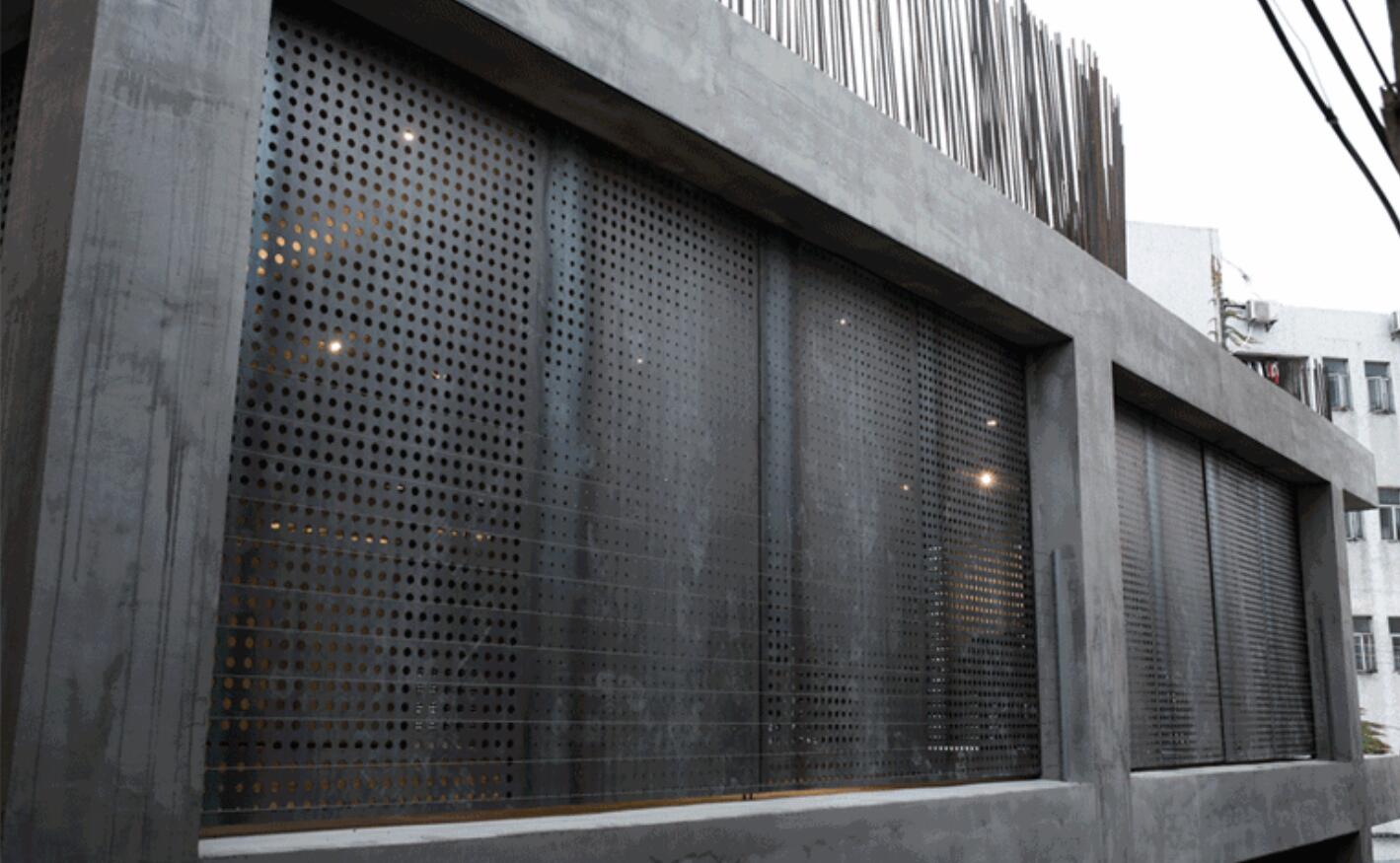

Domino
100 years ago, the modernist master Le Corbusier summed up the "Domino" prototype - replacing the traditional wall load-bearing system with reinforced concrete. In an instant, this launch of the dominoes set off a global craze for reinforced concrete buildings.

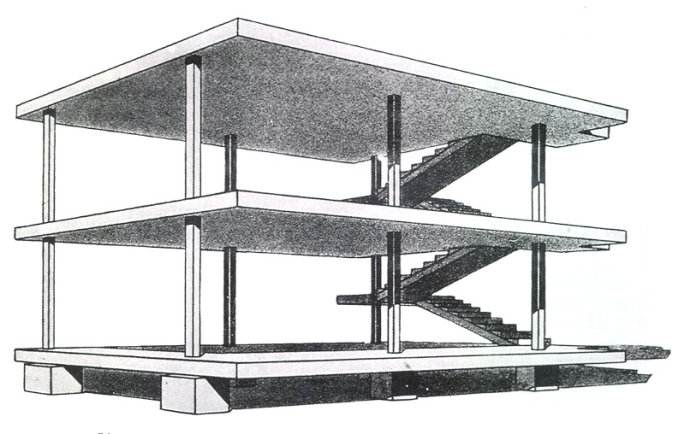
100 years later, in the upper part of an ordinary village in southern China, an abandoned rotten concrete building unexpectedly attracted Huang Weiwen, a curator from Shenzhen. He found that this unfinished building is strikingly similar to the Domino prototype. The rough bones of the concrete frame are exposed in the weeds, as if to reveal the common modernist origins under the skin of the rural self-built houses in the Pearl River Delta.

Before and After
Architects from Benyuan Design and Research Center were invited to carry out researches on this old building and a series of renovation strategies are proposed: 1. Retain the original structure of the concrete frame, which is used as a physical sample to showcase the application of domino framework in Shangwei Village; 2. Add 24 giant metal doors to create a space with different opening combinations for the flexible use of art and education.
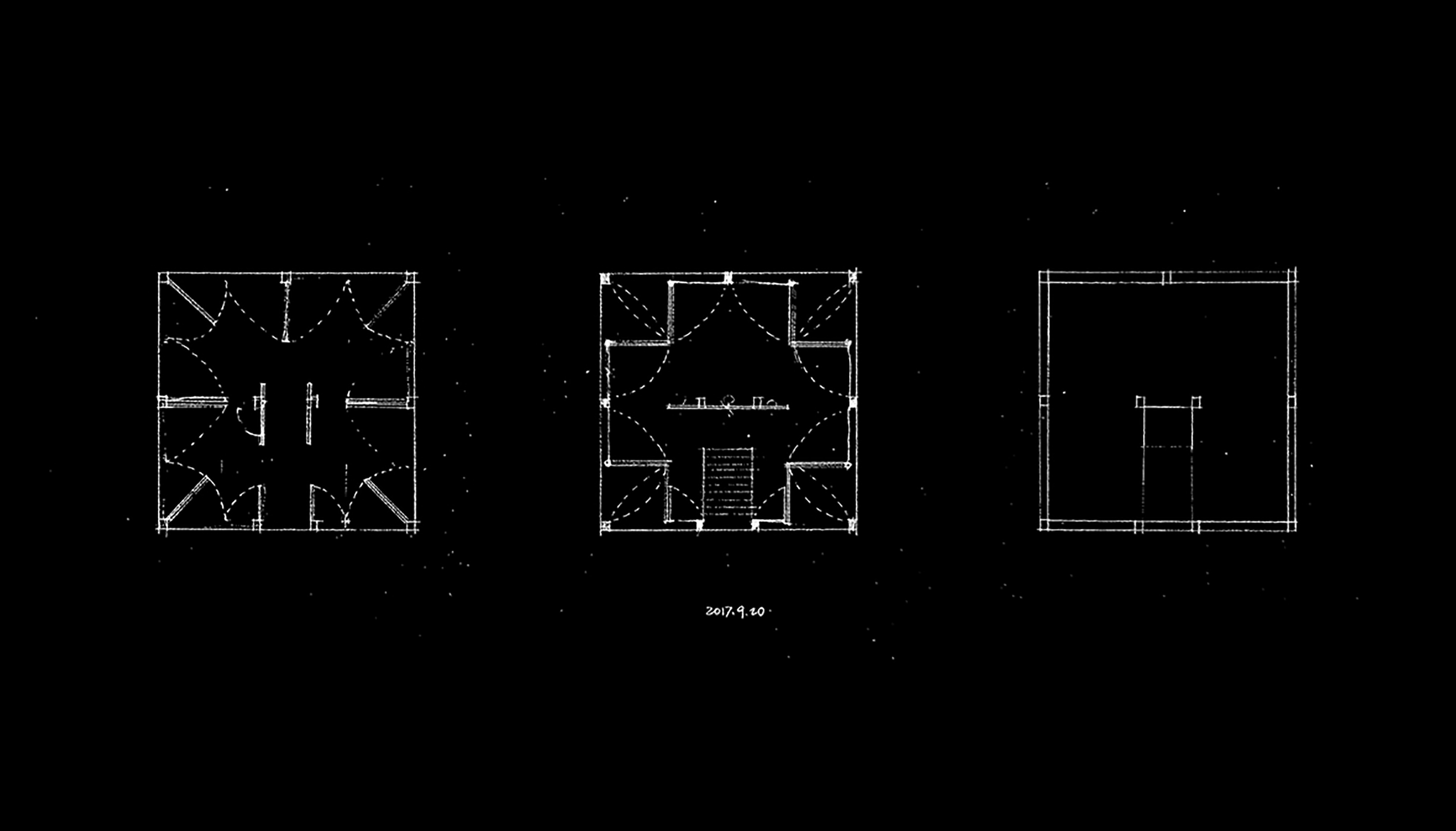
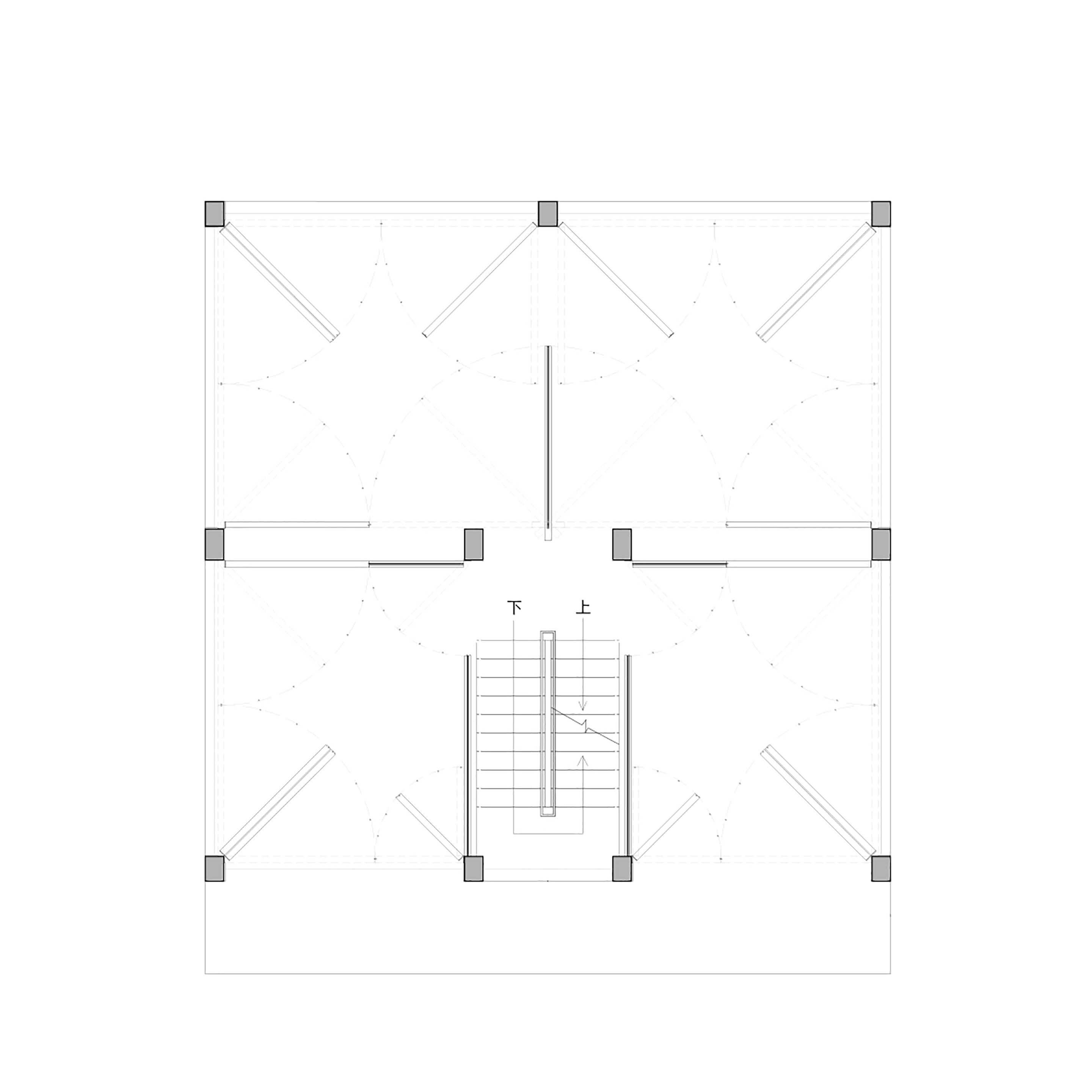
Kaleidoscope
In the pavilion, the space formed by these 24 doors is like a kaleidoscope with the background of the village in the city, a observation deck that watches the chaos and richness of life.

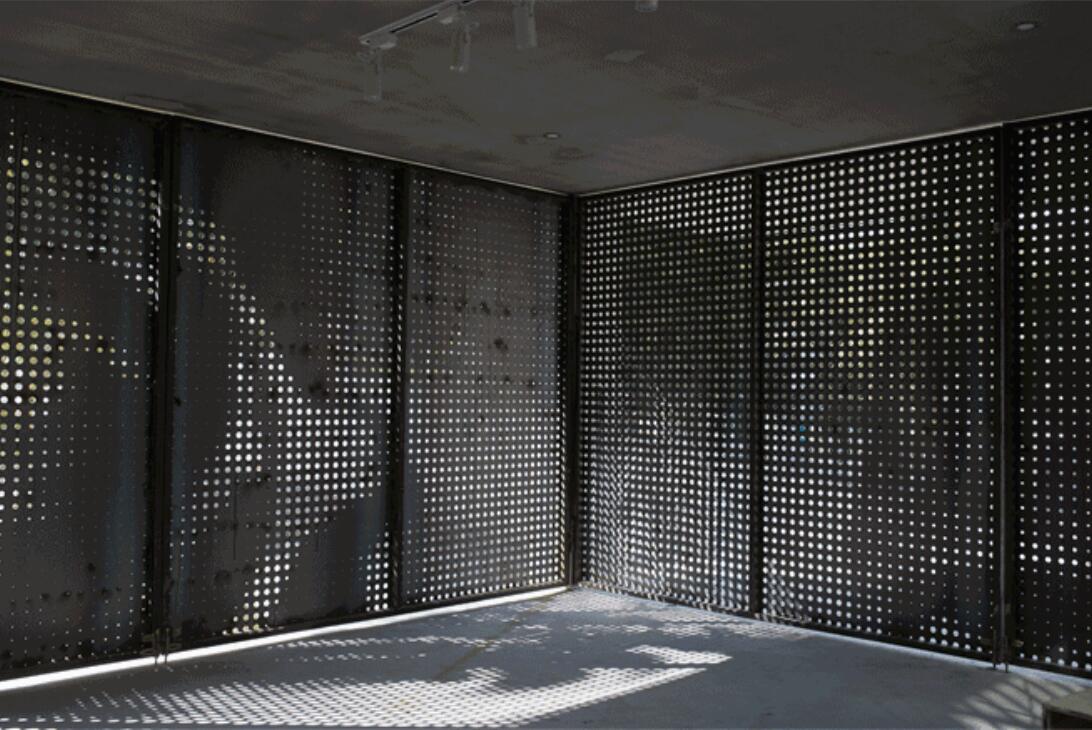
Take a casual look through an open door, you will see different angles of Shangwei Village: east, a mottled corner of a 100-year old Hakka house; north, a pink wall made by mosaic tiles; west, a villa of European style built by villagers.



The closed doors are covered by the perforated patterns. In the daytime, the sun light will go through the holes and leave shadows on the ground. After sunset, the light coming through the holes will vaguely constitute the face of Corbusier, a serious gazing face, is superimposed with the modern industrial landscape that he expects to grow. Through the eyes of this architect, who construct the Western Architectural Theory, people can catch a sight of this village growing in the south of China.
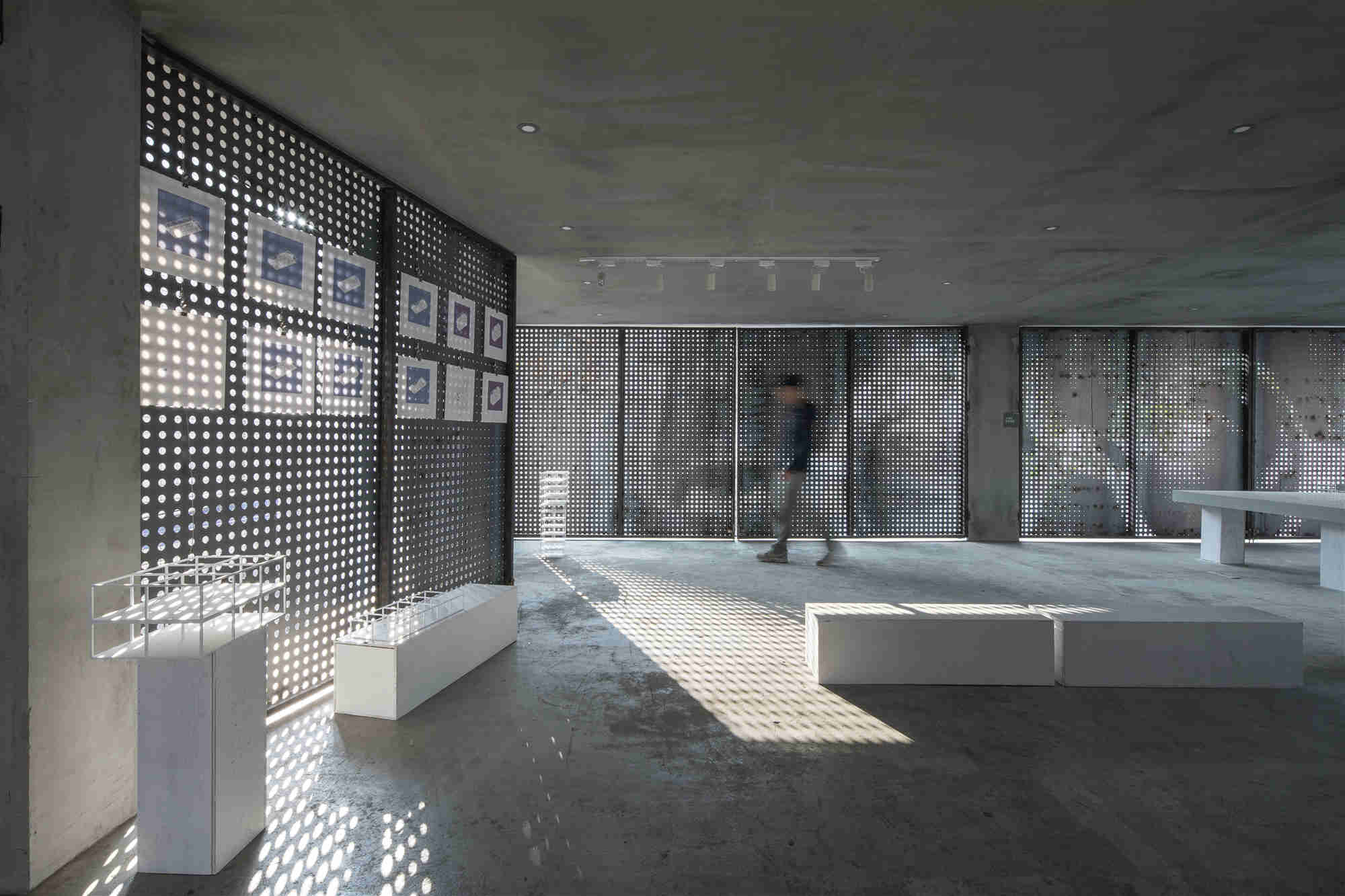
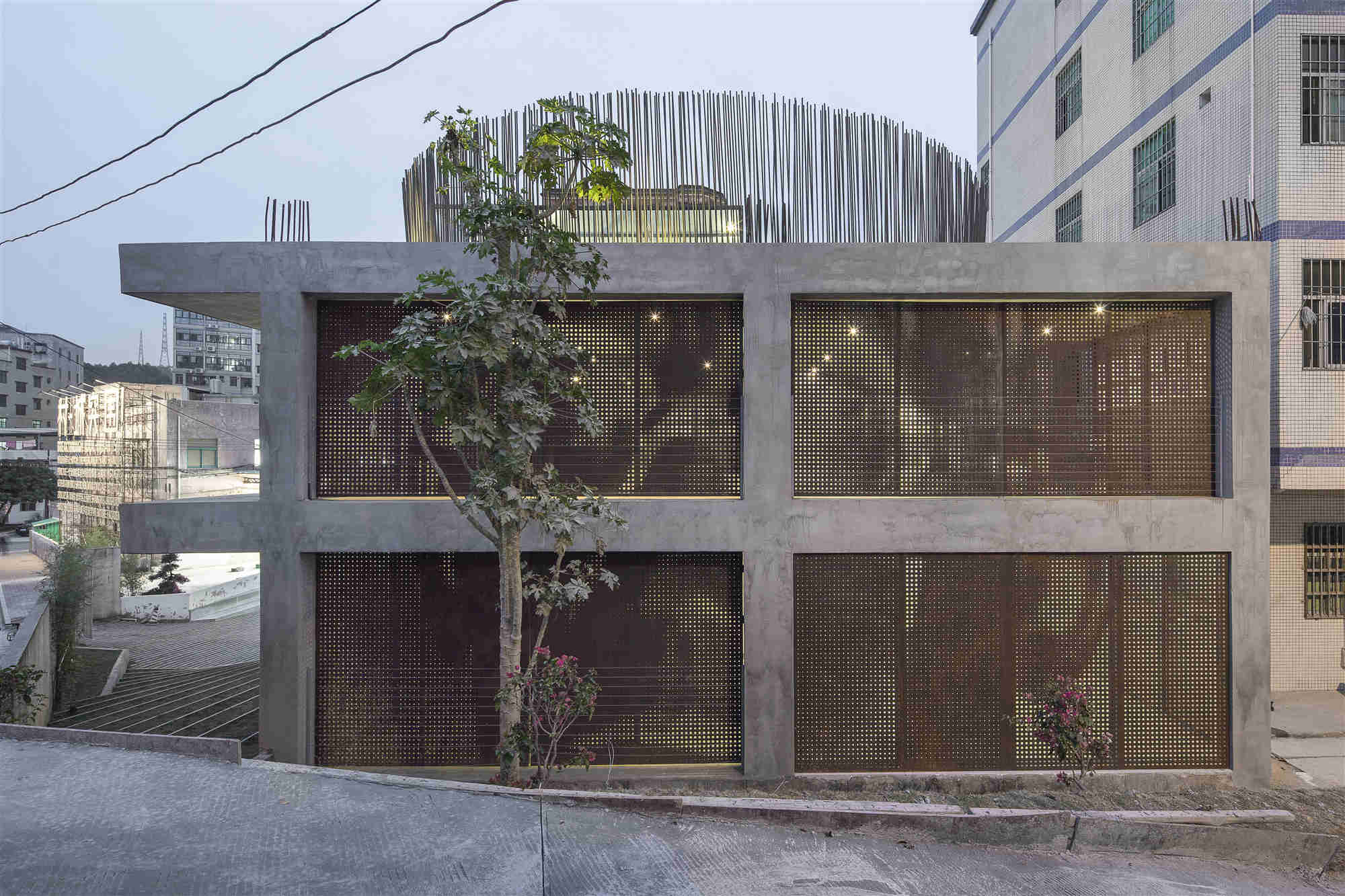
The villagers stood in front of the face and asked, "Who is he?”.
Only the designer knows that this is a historical connection that has been meticulously and implicitly built.
Self-Growth
The Domino Pavilion is more than a static building, it's an inclusive place for growth and movement.
The ground floor has a studio, which can be used as the planner's office or a place for public education. The second floor can be flexibly enclosed and split by the 16 newly added giant metal doors to accommodate art exhibitions, community gatherings, small performances and other activities. The roof serves as a community platform for public events.

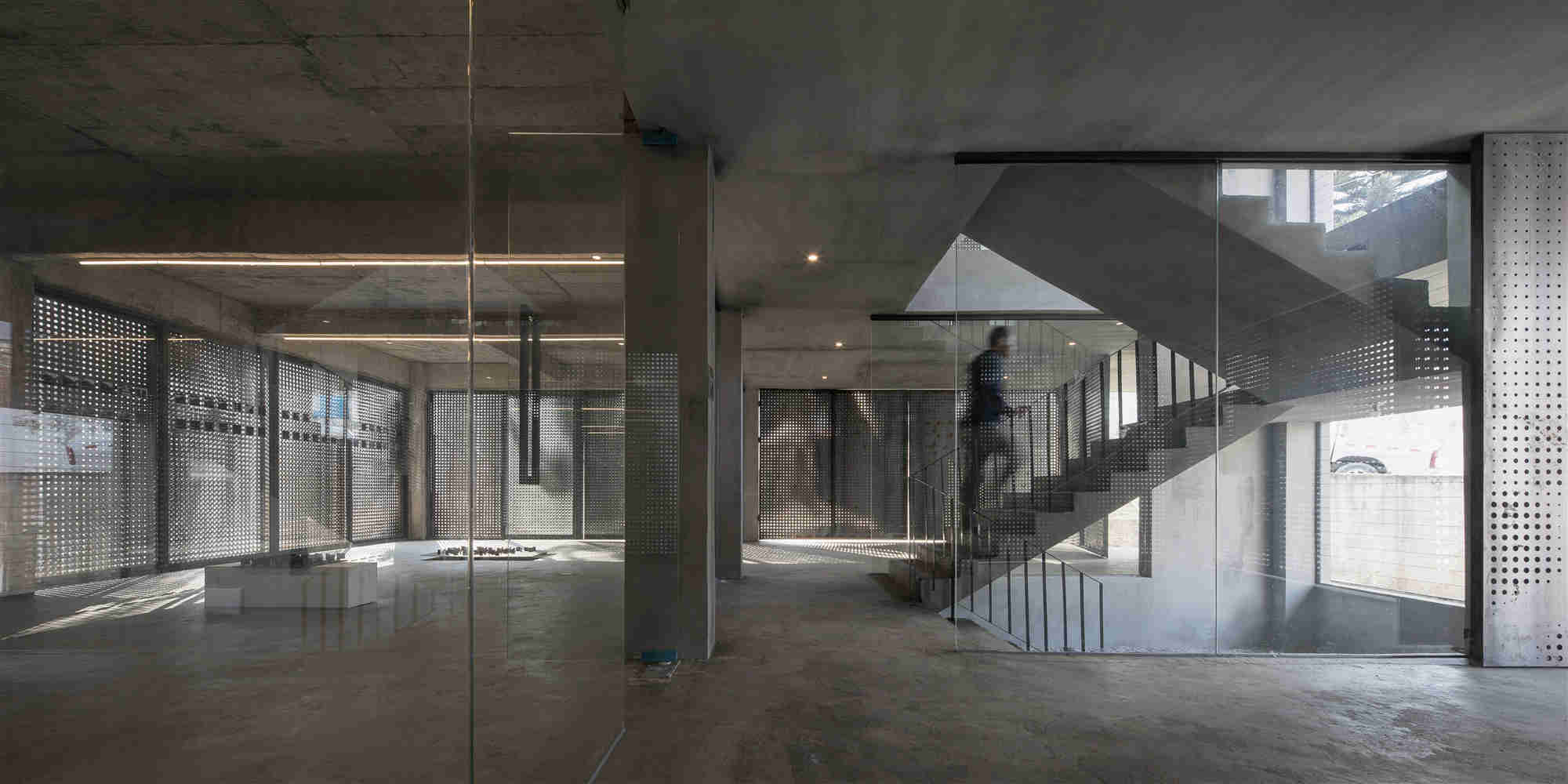
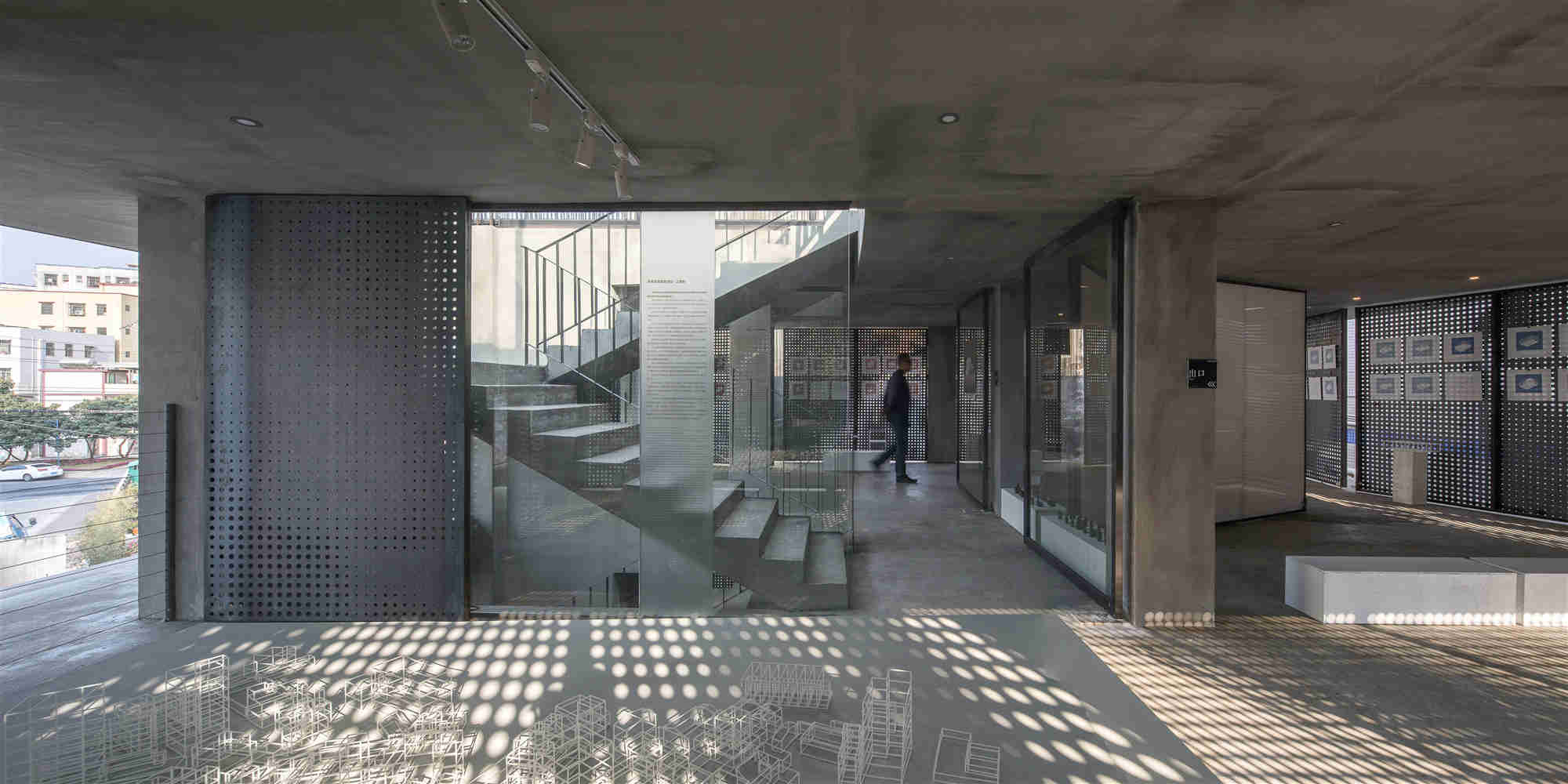
A residential loft that was not completed by former villagers is now transformed into an art space shaped by flexible metal doors and serves the school project planned by the Biennale, and in the future will accommodate aborigines and the arrival of new tenants. The Domino Pavilion combines the possibilities of the past, the present and the future, and becomes a flexible platform for communications between different groups of people and different cultures.


24 giant doors, the perforated doors, the translucent doors and the glass doors, are like a breathing layer, responding to the penetration of the surrounding environment in different postures: activating the ground at a specific time with the rhythm of light and shadow, revealing the subtle reflections and floodlights through the rotations of the doors, or following a person's behavior or trajectories by the translucent divisions.

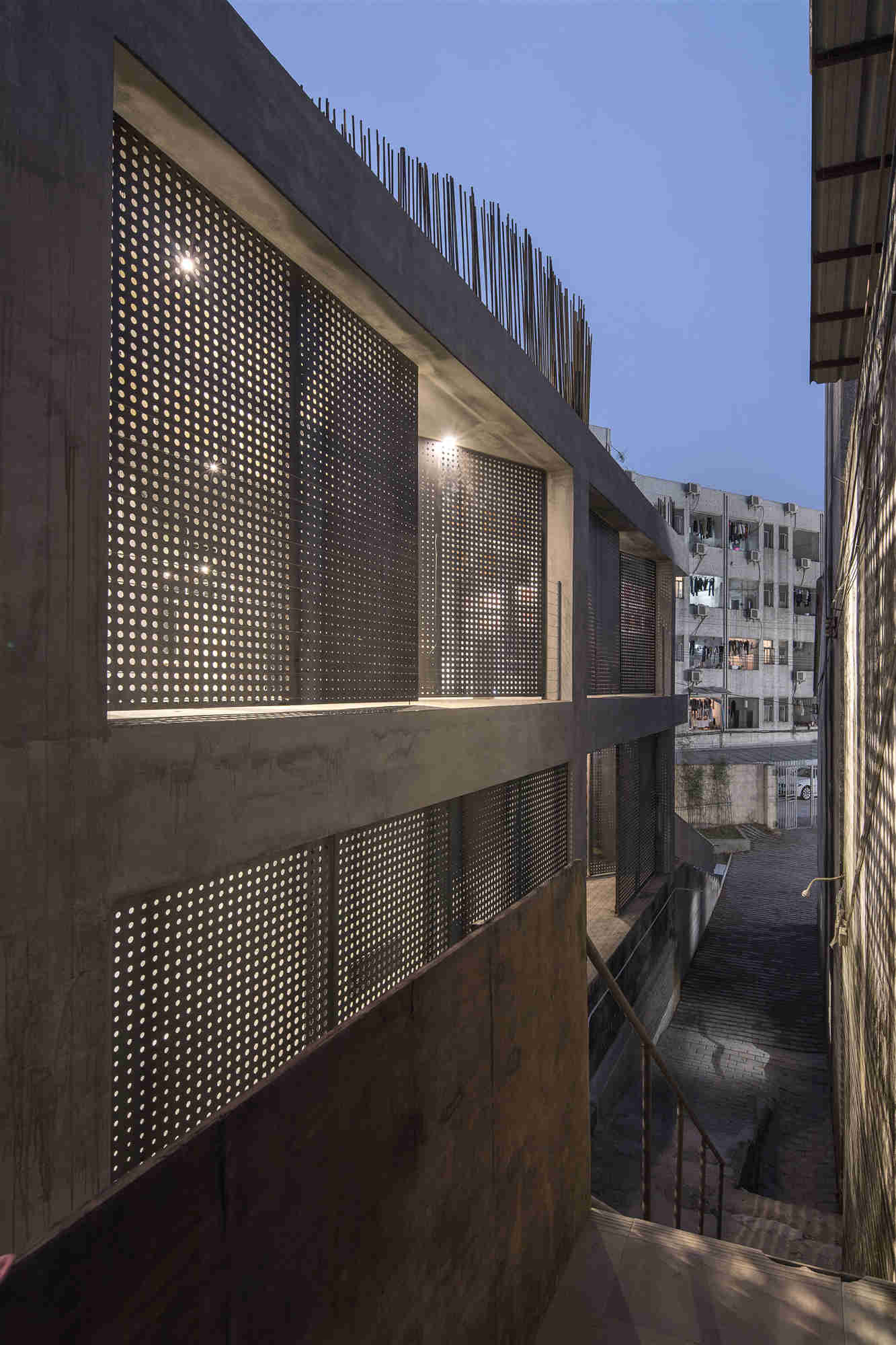
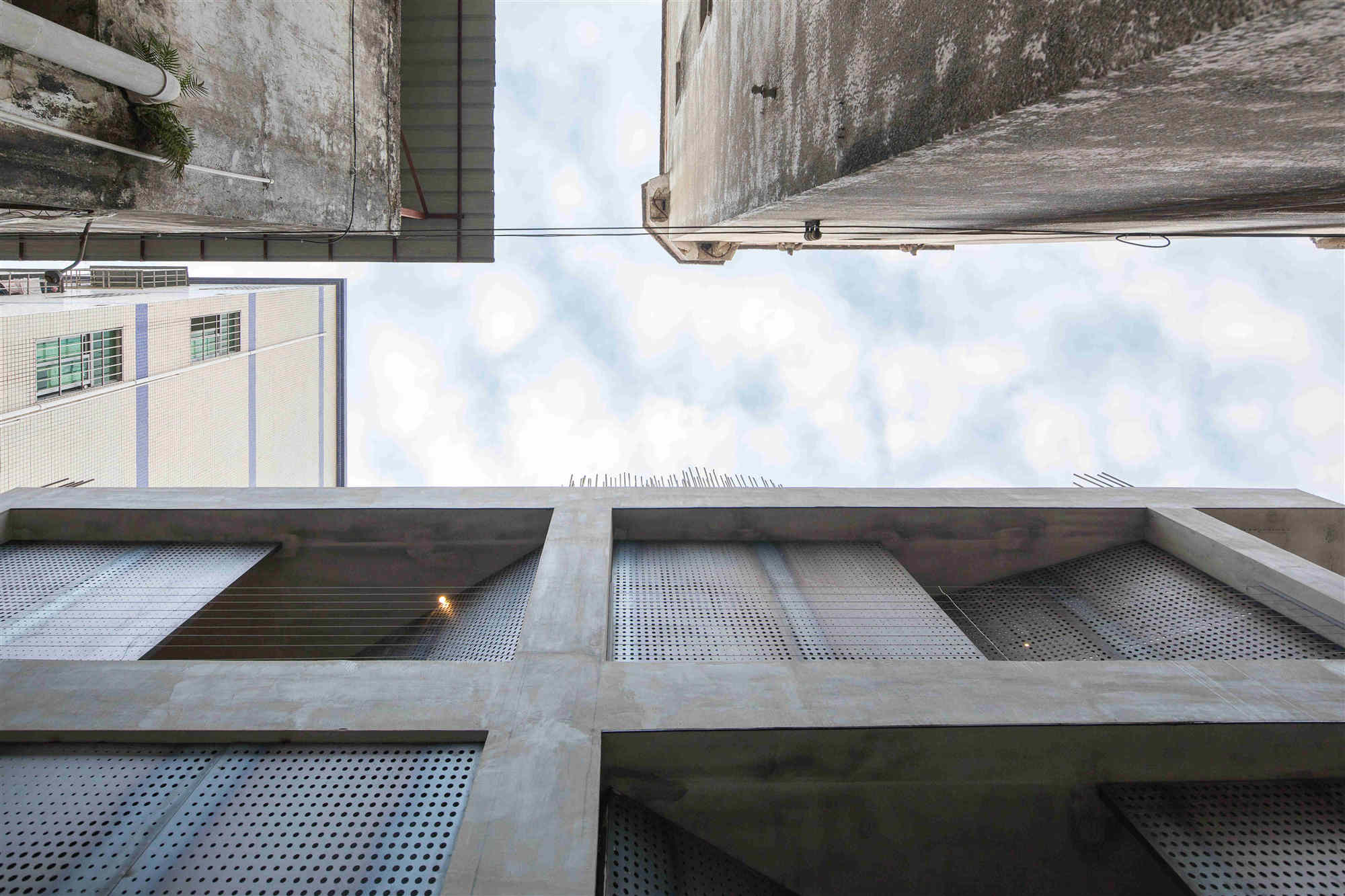
Even the exposing steel bars on the roof reserved by the aborigines were carefully preserved and a circular garden with the theme of steel bars was set up. Stepping on the gravel floor of the garden, a view of vibrant village is just in the front. If you look up, you can see a circular sky enclosed by the standing steel bars.
